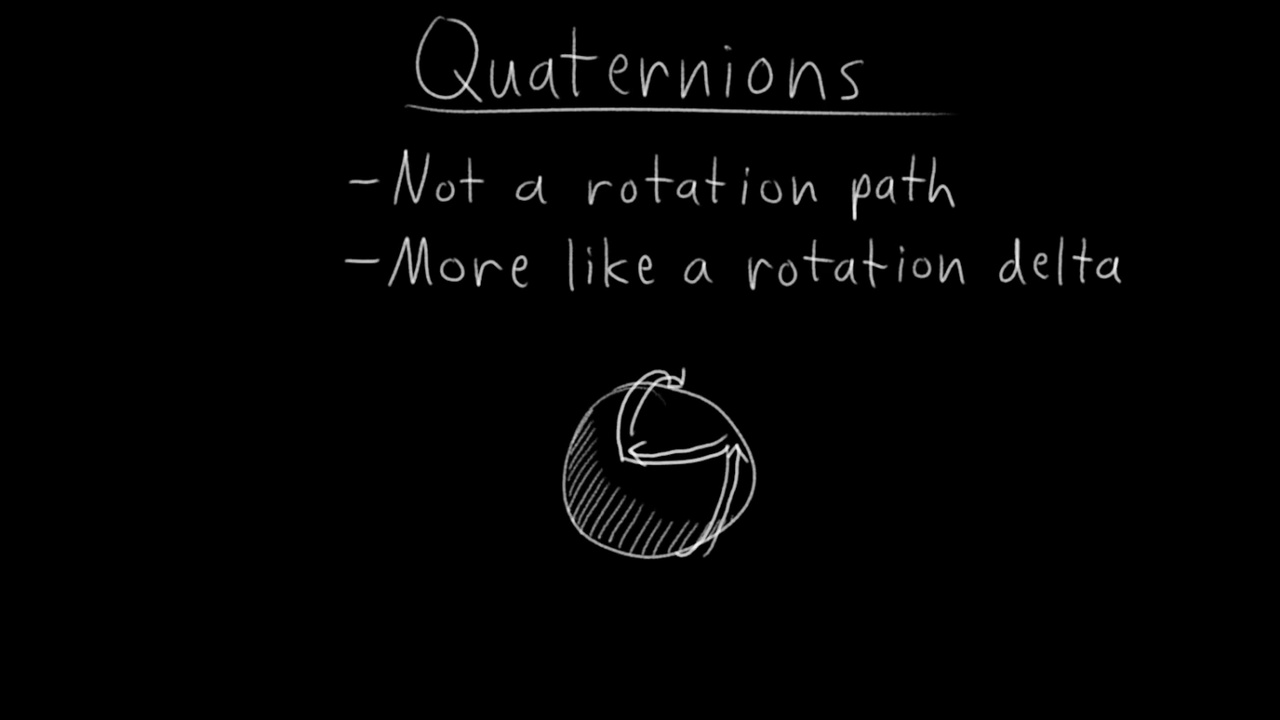
Login to view this content
Join Blender Studio for just €11.50/month and get instant access to all of our training and film assets!

05 Quaternion Rotation
Quaternion rotations explained.
7 comments

According to the "Blender 2.90 Manual", the values for " X", "Y" and "Z" define an axis and "W" a rotation angle around that axis. See https://docs.blender.org/manual/en/2.90/glossary/index.html?highlight=quaternion . According to this, "W" has a special meaning whereas Nathan says at 3:50 in the video that there is no special meaning of that variable. How can this discrepancy be explained?

For "Quaternions" in Blender, there's also a good article in the "Blender Art Magazine" with the title "A world of rotations". See https://issuu.com/blenderart_magazine/docs/blenderart_mag-31_eng . On page 16, the author writes that "W" is the "Rotation Angle" around the axis defined by "X", "Y" and "Z".

Let me put it this way, Googling Quaternion, I couldn't find an explanation that I could understand better than the one you are providing, I mean even the check spell system in the browser is underlining the word with a thick jagged red line! Anyways, fiddling with it in Blender, for some reason.. Feels more natural than Euler.. Thanks god I'm not the one that has to do the tutorial! I'll most probably watch this video again many times on an extended period of time to enhance my understanding of the concept, for a non-programmer non-mathematician person that I am, the concept itself is a very complex concept that you managed to scratch it's surface without mentioning the mathematical equations behind it :) Many thanks!

@Georges Dahdouh: I had to watch it a few times myself because I'm a non-programmer non-mathematician person too but a non-native English speaker in addition. But I have to say that -at an animator level- Quaternion is far from natural. Actually I've asked Hjalti on a podcast about this and he said that he always change the quaternions into euler for his shots.

@Forgotten Fantasies: I'm non-native English speaker too, when I spoke about natural, it's how I felt, so this is my subjective feeling. Concerning Euler, I faced many issues with Euler, for instance, try to apply a Limit Rotation Constrain with an Euler, put Min to 0, Max to 270 degrees, it will always snap to 0 once it reaches 180, I researched it and the documentation says that it's an Euler limitation, so yes Euler is easier to deal with for simple tasks, but in order to skip it's limitations and to avoid Gimbal Lock, I believe there's no option but to go with Quaternion!

@Georges Dahdouh The snapping of an object with a "Limit Rotation Constraint" to its "Zero Degrees Position" when reaching 180 degrees can also be observed with "Quaternion Roations". If you press "Shift" for a finer rotation you can reach the 180 degrees without snapping but typing the 180 degrees directly into the appropriate field for "Euler Rotations" makes the object snap to the "Zero Degrees Position".

This is one of the better explanations of quaternions in application that I've ever seen, and I've seen quaternions explained in both electrical engineering and computer graphics textbooks. Nicely done! :)
Join to leave a comment.